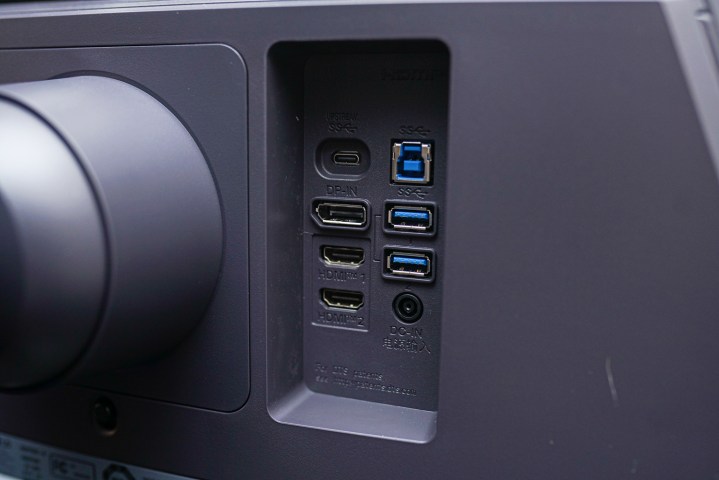Looking for a new monitor often focuses on image quality, but one crucial feature tends to go unnoticed. More and more monitors are now equipped with a KVM switch, revolutionizing how you can use your display with multiple devices.
The KVM switch is a feature that can easily be overlooked, mixed in with other common features found on displays. However, don’t underestimate its importance. When selecting your next monitor, ensure it comes with a KVM switch.
Exploring the KVM Switch

The KVM switch, short for keyboard, video, and mouse, used to be an external unit where all peripherals could be connected. These little units had display and USB connections along with a master output, allowing you to connect multiple PCs to the same screen and switch between them using the same peripherals.
Today, KVM switches are integrated into monitors. They are now commonly found on gaming monitors like the Asus ROG Swift PG32UCDM and Gigabyte M32U, as well as productivity displays like the Dell UltraSharp 34. This feature is increasingly prevalent in midrange to high-end monitors.
The rise of KVM switches in monitors is largely attributed to the prevalence of USB-C connections. With older KVM boxes, you had to have separate display and USB connections for each source. However, with USB-C, it’s now possible to transfer data and power over a single cable to simplify your setup, enabling monitors to incorporate KVM switches directly.
Here’s how it works: You connect your keyboard and mouse to the USB ports on your monitor. Then, use a USB-B cable to connect your monitor to a PC via HDMI or DisplayPort. You can also hook up another device via USB-C, such as a laptop or second PC. That’s all you need to do.
While some monitors may require manual source toggling, others like the KTC G42P5 can automatically switch peripherals. It’s important to note that the KVM switch functions across devices, whether it’s a game console, MacBook, gaming PC, or any other device that supports the peripherals you’re using.
Personal Experience with a KVM Switch

The practicality of a KVM switch became evident to me when I started using it with my Steam Deck. Since my monitor supports USB-C power delivery, I’ve been able to connect my Steam Deck with a single cable, using my keyboard and mouse across my main PC and Steam Deck while keeping the handheld charged.
I’ve found the Steam Deck to be perfect for emulating classic games due to its portability. While gameplay is done with a controller, setting up everything without a keyboard and mouse is a challenge. Thanks to the KVM switch, I can easily configure everything on my Steam Deck desktop using my main monitor without the hassle of switching cables.
I also use it with a Mac. While my primary setup includes a desktop PC for work and gaming, occasionally I need to use a MacBook Pro for hardware reviews. By simply switching the USB-C cable from the Steam Deck to the MacBook Pro, everything seamlessly transitions between Windows, Linux, and macOS on the same display with minimal cable swapping.
Your use case may vary. For remote work, you might want to utilize your gaming keyboard and mouse across a work laptop and desktop without cable swapping. A KVM switch facilitates this flexibility. Whether you have a Steam Deck, ROG Ally, or want to use your keyboard and mouse with consoles like Xbox or PlayStation, a built-in KVM switch simplifies what would otherwise be a tangled mess of cables.
Why Your Next Monitor Needs a KVM Switch

Don’t overlook features like a KVM switch when searching for your next monitor. With USB-C becoming more prevalent as a connection standard, dedicated KVM switches are increasingly integrated into displays, making this feature more accessible.
However, KVM switches are not yet common in budget displays like the MSI Modern MD271UL, despite supporting USB-C. Be sure to check the feature list of the monitor you’re interested in to see if it includes a KVM switch. Hopefully, KVM switches will become a standard feature in monitors in the coming years as the trend continues in that direction.
Editors’ Recommendations



